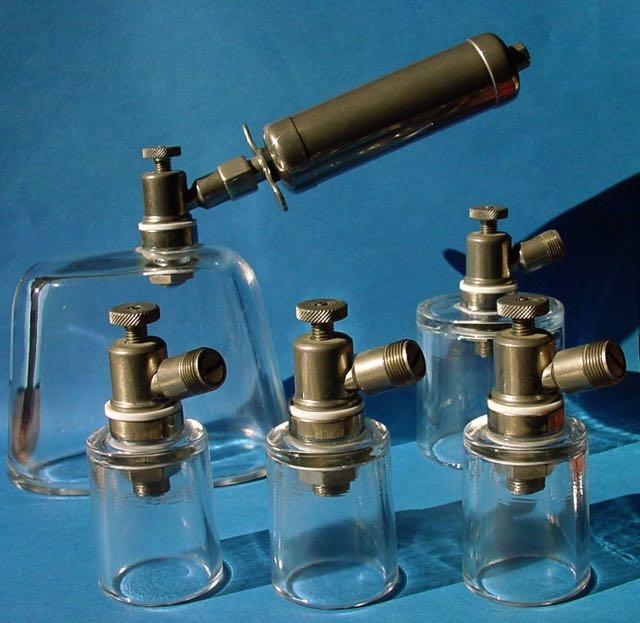Surgery |
||
Cupping glass (11) |
||
Occasionally, I had doubts as to whether the device shown here is really something medical or a pornographic article that causes the vulva to swell. I was not reassured until I saw a very similar device, which was made in the 1930s by Franz Itting in Probstzella / Thuringia, in whose glass bells was written read "cupping hyperaemator".
Lit .: The cupping hyperaemator, a new high-quality therapeutic for the general practitioner. A contribution to the history of the cupping process. Fa. Franz ITTING (ed.), C. 1935.
Franz Itting (1875-1967) had founded a power station in Probstzella in 1909, bringing the power supply to southeastern Thuringia. Socially very involved, he was put into a concentration camp by the Nazis as "Red Itting" and again imprisoned and expropriated by the communists after the war in 1948. In 1950, after being released from prison, he fled with his family to Ludwigsstadt in neighboring Bavaria (Kronach district) and built there - at the age of 75, again an electricity company, which still exists today. For the cupping heads, the company supplied the matching Skarifikator: "To cut the cuts, it is best to use a small device that ensures almost painless cutting, depending on whether you have a heavy, obese patient in front of you or an asthenic, take the larger or smaller knife insert to always clean this apparatus well, what happens with the aid of a device supplied by the named company (Mrs. Itting) "(Aschner-Fibel, 13th edition Haug-Verlag Heidelberg 1996 p.98).
Homer describes in the IVth canto of the Iliad how in the ancient Greeks after the removal of an arrow the wound (by Menelaus) was sucked out. GALEN designed his own instrument, the "pyulcon".
In the first half of the 18th century, the French surgeon Dominique ANEL (1679-1740) invented a small suction syringe to replace this so-called "soldier's sucker". Until then, groups of men and women on the battlefields of "honor" had been busy vacuuming the soldiers' wounds to remove dirt as a source of infection.
Lit .:
|




